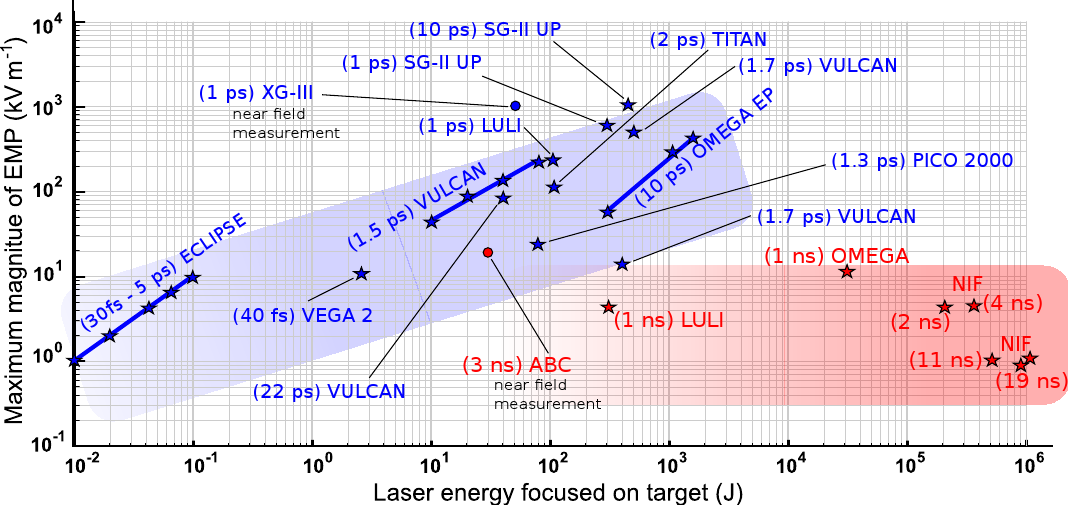The paper is available as open access, here.
Modern high energy and high intensity lasers are capable of generating intense electromagnetic radiation and energetic particles when they interact with matter. A significant portion of the electromagnetic spectrum of emission ranges from the radiofrequency to the microwave and to the terahertz domains, with associated fields attaining remarkable values. These high intensity electromagnetic pulses (EMPs) may be deliberately used for innovative applications, but they also represent a serious threat for electronics placed inside and near the interaction chamber. This is a key problem faced in all high energy and high intensity laser facilities in experiments aiming at laser-plasma interactions, acceleration and inertial confinement fusion, which has recently stimulated an intense research activity in several laboratories around the world.
The accompanying figure shows a compilation of the EMP amplitudes measured at different laser installations in experiments with picosecond and nanosecond laser pulses.
Abstract:
The paper gives the scientific community an up to date reference on the problems related to the generation, detection and mitigation of the strong EMPs created in the interaction of high power, high energy laser pulses with different types of solid targets. It includes a review of published measurements and new experimental data obtained independently in several laboratories around the world. The mechanisms of electromagnetic field generation are analysed and considered as a function of the intensity and the spectral range of emissions they produce. The major emphasis is directed towards the GHz frequency domain, which is the most damaging for electronics and may have important applications.
The physics of electromagnetic emissions in other spectral domains, in particular THz and MHz, is also discussed. The theoretical models and numerical simulations are compared with the results of experimental measurements, with special attention to the methodology of measurements and complementarity of diagnostics. Understanding the underlying physical processes is the basis for several recently developed techniques aiming at mitigation of the electromagnetic threat and harnessing of the electromagnetic emissions.

Figure Caption: Compilation of the measured amplitudes of EMP signals at different laser installations. Blue and red zones outline the data obtained with ps and ns laser pulses, respectively. All data were normalized to the reference distance of 1 m from the source. Values for the ABC and the XG-III experiments were obtained at distances 85 mm and 400 mm from the target, respectively. The normalization might produce a field overestimation of a few times.
